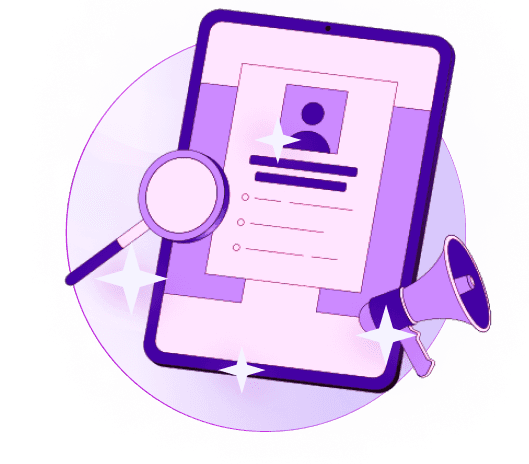Blogs
Articles

Top 5 AI Sales Agent Adoption Challenges and How to Solve Them
AI sales agent adoption challenges continue to grow as these technologies revolutionize business operations. Gartner predicts that by 2028, a third of enterprise software applications will use agentic AI. This will enable 15% of daily work decisions to be made automatically.
The stakes are high. A newer study, published by Accenture predicts AI agents will become the "primary users of most enterprises' internal digital systems" by 2030. This rapid rise explains why 92% of developers believe AI agents will boost their careers.
Let's get into these challenges and their practical solutions.
Data Quality and Integration Challenges for AI Sales Assistants
Quality data powers every successful AI sales assistant. Research shows a striking disconnect: 81% of companies face major AI data quality problems, while 85% believe their leadership doesn't deal very well with these issues. This gap creates a fundamental barrier to AI sales agent adoption.
Understanding the Challenge
AI sales assistants face data quality challenges from multiple sources. System fragmentation creates major roadblocks. Companies run their businesses using an average of 897 applications, but only 29% of these connect with each other. This creates what we call the "data dilemma" - information exists but remains trapped in disconnected systems.
Data consistency presents another challenge. Sales records often show dramatic variations across departments. Some systems log dates as "05/12/25" while others use "May 12, 2025" - these differences need standardization before AI systems can process them effectively.
Stale or incomplete information poses a vital hurdle. AI sales assistants need current, accurate data to work properly. Many organizations' records contain missing values, wrong contact details, or outdated information. These gaps create blind spots that prevent AI systems from giving reliable insights.
Integration challenges also affect enterprises implementing AI agents. Almost 80% of enterprise IT leaders point to connecting AI agents with existing tools as their biggest adoption obstacle. These difficulties often cause delays, with 29% of AI agent expansion projects missing their deadlines.
Impact on Sales Performance
Data quality problems affect more than IT teams - they hit revenue directly. Organizations lose about USD 12.90 million annually due to poor data quality. Large companies generating over USD 5.60 billion in annual revenue face even bigger losses, averaging USD 406 million yearly.
Poor data quality creates several practical issues for sales teams:
Missed Opportunities: Companies lose 45% of potential leads due to duplicate records, invalid formatting, or outdated contact details.
Wasted Time: Data professionals spend 27% of their time fixing errors and checking accuracy instead of generating insights.
Unreliable AI Outputs: Incomplete or inaccurate data leads to flawed results from even advanced AI algorithms. Experts call this the GIGO problem - "garbage in, garbage out."
Trust Erosion: Sales teams lose faith in technology and return to manual methods when AI assistants provide wrong information.
Bad data affects the entire sales process. Outdated contact information makes prospecting inefficient. Incomplete customer history weakens lead qualification. Even the smartest AI sales assistant can't overcome flawed data inputs.
Solution: Data Cleansing and Standardization
Automated data cleansing tools offer a solution by detecting errors, removing duplicates, and standardizing formats with minimal manual work. These systems cut data preparation time significantly.
Data standardization creates consistent, uniform formats across systems. This process ensures similar conventions for important data points like customer names, addresses, and transaction records. Standardized information helps AI systems work better and eliminates formatting confusion.
AI itself can boost data quality through:
Anomaly detection: AI systems can spot unusual patterns that might indicate errors.
Automated validation: Entry point validation rules stop errors before they enter the system.
Predictive analytics: Advanced algorithms can complete missing values based on past patterns.
Clear data governance policies play a vital role. These frameworks set quality standards, processes, and roles throughout the organization. AI tools need proper governance to maintain data integrity over time.
Implementation Strategy
A strategic approach helps implement effective data quality solutions. Research suggests a four-phase implementation process:
Phase 1: Assessment and Prioritization
Start with a complete data quality audit to find critical issues. Look at AI datasets, document problems, and focus on key improvement areas. Customer contact information, purchase history, and product details usually give the best returns.
Phase 2: Foundation Building
Set clear data requirements that define quality standards for AI sales applications. Build a complete quality framework with policies, standards, and team roles. Encourage a data-driven culture by teaching employees about accuracy's importance.
Phase 3: Automation Implementation
Use automated tools for data cleansing and standardization to reduce manual work. Set up monitoring systems that alert you to pipeline issues. Live anomaly detection helps catch problems early before affecting sales.
Phase 4: Ongoing Improvement
Data quality needs constant attention. Regular audits help find and fix inconsistencies. A dedicated quality team ensures continuous monitoring and process improvements.
Employee Resistance to AI Sales Agent Adoption
"Turn your sales org into a sales lab. Give generative AI tools to your sellers and tell them to experiment until they find the applications they love. That's how we'll train sellers — not from the top down, but from the bottom up." — Marcus Chan, President and Founder, Venli Consulting Group
Advanced AI sales technology will fail without employee buy-in. Recent research shows that 75% of employees worry AI could render their roles obsolete. Resistance to these tools creates a substantial barrier to successful implementation. People often overlook the human element while focusing on technical aspects, yet it remains vital to realize the potential of AI sales agents.
Understanding the Challenge
Several interconnected factors cause employee resistance to AI sales agents. Fear drives much of this pushback. Salespeople wonder if algorithms will eventually take over their expertise and relationships. Their concerns show up as active or passive resistance to adoption.
These fears make sense. One study noted, "Many people talk about use cases that cut costs, because generative AI could replace some human work". Sales professionals have seen automation eliminate roles in other industries over the years. AI poses a more sophisticated threat that could handle thinking tasks once thought to need human intelligence.
Gaps in knowledge make resistance worse. A newer study shows that just 20% of salespeople use AI tools on a frequent or daily basis. Low adoption rates happen in part because sales professionals don't really understand what AI agents do or how they would work with them day to day.
Impact on Sales Team Morale
Teams can suffer when resistance to AI sales agents goes unaddressed. Employee morale drops when people feel threatened instead of strengthened by new technology. This creates ripple effects throughout the organization.
The flip side shows something interesting. MIT Sloan Management Review research found that 75% of executives report AI implementation improves team morale. 78% saw improved collaboration and 58% noted increased efficiency and decision quality. These findings suggest that initial resistance can turn into enthusiasm once overcome.
The gap between these good outcomes and early resistance teaches us something important: success depends more on how teams implement the technology than the technology itself. One researcher explained, "When people have a culture that is trusting and accepting of artificial intelligence, then they use it. When they use it, then they improve their effectiveness".
In spite of that, poorly managed resistance leads to real problems:
Teams become less productive by avoiding AI tools
AI systems don't improve because they lack human feedback
Companies lose their edge as competitors successfully exploit AI
Both AI resisters and supporters leave due to stalled progress
Solution: Collaborative Implementation Approach
Companies need a strategic, employee-centered approach to overcome resistance. RAIN Group's research revealed something vital: sales professionals who see AI as a collaborative teammate rather than just a tool show 4.8 times greater impact on their performance and productivity. This change in mindset from "tool" to "teammate" helps realize AI's full potential.
A collaborative implementation approach needs several key elements:
Early involvement: Sales team members should help make decisions from the start. Research suggests organizations should "involve the sales team in the decision-making process right from the start, and clearly communicate how AI will benefit their roles".
Transparent communication: Teams should talk openly about fears through honest dialog about AI's role. Companies can host town hall meeting or open forums where employees voice concerns and get straight answers
Incentive alignment: Some incentive changes might help encourage adoption. One successful company "overcame resistance by changing its pay structure to temporarily pay higher commissions for sales in areas recommended by the algorithm". Revenue and productivity went up afterward.
Celebration of wins: Companies should recognize and reward early adopters and successful implementations. One expert noted, "Many companies will say they want people to experiment, but then management often penalize the experiments that they deem less successful. People need to feel that it is okay to take risks. You need to reward those that do".
The message should focus on how AI increases human capability rather than replacing it. "What we're seeing isn't replacement but augmentation" needs to be the main theme of any AI sales agent rollout.
Training and Support Programs
Detailed training turns theoretical acceptance into practical adoption. Even the best AI sales agents will sit unused without proper training.
Good AI sales agent training programs should have:
AI literacy fundamentals: Simple training about how AI works, what it can and can't do. "'Working with Digital Agents 101' sessions help demystify the technology and provide practical guidance for daily interactions".
Role-specific enablement: Custom training for different sales functions and their unique AI interactions. "Managers need different skills than individual contributors, and customer-facing roles have different requirements than back-office functions".
Hands-on practice: Real sessions where teams can explore features and learn daily workflow integration.
Continuous learning: Regular training updates to build skills and meet changing needs.
Good support systems help maintain adoption:
Dedicated help channels: Special communication channels for AI tool questions, through internal teams or vendor support.
Peer learning networks: Ways for colleagues to share knowledge. "Initiatives like 'AI office hours,' where experienced users or IT staff offer real-time assistance, create a supportive learning environment".
Feedback mechanisms: Ways to gather ongoing input to improve AI based on user experiences.
Training matters more than most people think. One expert put it this way: "When you invest a dollar to build the required data system and develop the AI model, you need to invest at least another dollar to enable the implementation, especially building the capability to use it".
Cost and ROI Concerns with AI Salesperson Implementation
Money makes or breaks AI sales agent projects. Companies that use AI sales tools get 3-6x returns on their investment in the first year. Yet many businesses find it hard to justify these costs. A clear understanding of both expenses and potential returns will give a solid foundation for any AI sales project.
Understanding the Challenge
AI sales tools create value in many ways at once, unlike regular software purchases. This needs a more detailed framework to assess their financial effect. Building a clear business case becomes tricky, especially when companies face spending limits even in good economic times.
Many organizations play it safe with AI. About one-third take part in limited AI implementation, while only 22% go all-in with widespread integration. They hold back mainly because they're not sure about returns. The full ROI picture only becomes clear after companies find different ways AI can deliver results.
Rising computing costs make things harder. IBM research shows computing expenses will jump by 89% between 2023 and 2025. Every CEO had to either cancel or push back at least one AI project due to costs. Companies must now be extra careful about which AI investments they choose.
Forrester's research shows 49% of AI decision-makers expect ROI within 1-3 years, while 44% look at 3-5 years. This gap between putting money in and getting returns creates friction in budget talks and planning.
Hidden Costs of AI Sales Tools
AI sales tools come with many surprise expenses beyond the obvious software licenses and setup fees. These hidden costs can change the ROI math drastically.
Data work eats up 15-25% of total project costs. Good data powers AI performance, so many businesses need big investments in data cleanup before they can start. About 96% of businesses begin without enough training data, which means more spending later.
Hardware needs take another 15-20% of total costs. AI tasks need special hardware like GPUs, which cost 15 times more than regular computing. One report puts it well: "Being first means paying premium prices for special hardware before cheaper options show up".
Hiring talent adds more financial stress. AI researchers, machine learning engineers, and data scientists command salaries between $100,000-$300,000 yearly. Even a small AI team's tech development can cost over $400,000 per year.
Solution: Phased Implementation Strategy
A step-by-step implementation helps handle these cost challenges better. Research shows 70% of companies report better sales after bringing in AI tools gradually.
Start by building a team with sales reps, data analysts, and AI experts. This mix ensures tech improvements match real business needs.
Set specific, measurable goals tied to business results instead of using AI just because you can. Common targets include getting more qualified leads, cutting lead costs, boosting conversion rates, or freeing up sales teams for important work.
Time matters too. Good AI implementation usually takes 3-6 months from planning to full rollout and fine-tuning. Clear milestones help adjust based on early results and feedback.
Follow these stages:
Original assessment: Check data setup, tech abilities, and available resources
Pilot project: Begin small where you can watch results closely
Intensive monitoring: Look at conversation records, success metrics, and team input
Iterative improvement: Change things based on what you learn
Gradual expansion: Grow successful parts across the company
This careful approach cuts financial risk. Companies can confirm ROI on a smaller scale before going all in. They also build internal know-how and spot company-specific issues early.
Measuring Success and ROI
Good measurement helps justify AI investments and guide improvements. Companies that track AI ROI well see 2.3x higher revenue growth than those using old measurement methods.
ROI calculations should include both hard and soft metrics:
Hard ROI: Real gains like savings from fewer manual tasks
Soft ROI: Quality benefits like happier customers
Start with clear AI goals to develop complete metrics. Find key areas where automation and AI help most. Look at things like conversion rates, decision speed, fewer errors, and customer happiness scores.
Get baseline data on current business performance for each KPI. This creates a starting point to compare with results after implementation.
Look at these for direct financial measurement:
Productivity gains (time saved with tools)
Cost savings (lower licensing fees, hiring costs)
Revenue growth (better lead conversion, higher customer value)
Security and Compliance Issues in AI Sales Prospecting
Data privacy and security create major roadblocks that slow down AI sales agent adoption. Organizations must protect sensitive information from sophisticated threats while building customer trust.
Understanding the Challenge
AI sales tools handle huge amounts of sensitive data. This makes them prime targets for cybercriminals. A data breach in AI systems can expose personal information and damage a company's reputation badly. Research shows 24% of sales professionals worry about privacy issues and data breaches from AI.
These aren't just theoretical risks. AI systems need large datasets to train properly. These datasets often contain sensitive personal information. The biggest problem comes from AI's need to collect, analyze, and store massive amounts of customer data. Without proper management, this creates serious security weak points.
Most organizations don't have proper control systems in place. Only 10% of companies have detailed, formal AI policies. This leaves businesses exposed to security threats and regulatory fines without clear guidelines to protect sensitive data.
Regulatory Considerations
Rules around AI sales tools keep changing faster across different regions. GDPR in Europe and the California Consumer Privacy Act (CCPA) in the US set strict rules for handling personal data. Sales teams now look for AI tools that follow these regulations. Security has become their top priority when choosing solutions.
Data flowing between countries creates more complications. Each country has its own data protection rules. Businesses must follow multiple sets of regulations when moving and storing data internationally. Sales teams working in multiple markets face even bigger challenges.
Industry-specific rules add more compliance layers. Finance, healthcare, and other regulated sectors face strict oversight for AI implementation. Companies that break these rules face legal and financial penalties. Their reputation takes a hit too.
Solution: Building Compliant AI Sales Systems
A successful compliant AI sales system needs several key elements:
Data protection by design: Use pseudonymization or anonymization for sensitive data when possible
Strong encryption: Keep data safe during transfer and storage
Access controls: Let specific roles view or edit key information
Clear data governance: Set formal rules for how AI systems handle sensitive information
Trust layers built into AI sales tools create strong compliance foundations. Features like quick encryption and anonymous data keep customer information secure.
Organizations should make compliance a basic design principle. Developers need to include relevant industry standards throughout development. This prevents expensive security updates later.
Ongoing Monitoring Protocols
Compliance needs constant alertness. Organizations should set up these systems to maintain compliant AI sales:
Real-time monitoring: AI systems should track data streams and transactions live to spot unusual behavior. The system alerts teams when it finds potential violations.
Regular audits: Review AI sales tools systematically to check if they follow changing regulations. These reviews should look at data usage, security measures, and possible weak points.
Automated alerts: Systems that notify teams instantly about possible compliance issues. Teams can fix emerging risks before they become serious problems.
Human oversight: Keep appropriate human supervision over AI systems, especially in risky situations. Clear escalation paths and decision protocols help teams handle compliance issues.
Scalability and Performance Limitations of AI Sales Agents
"It's about making connections through the data that you might not have made as a human being. AI has the uncanny ability to tease out things about the consumer you might never think about." — John Barrows, CEO, JB Sales
AI sales agents create unique operational hurdles that many organizations underestimate. Businesses must address these limitations to achieve long-term success with this technology.
Understanding the Challenge
AI agent development requires scalability planning from day one. Organizations face their most important issues when AI sales agents don't deal very well with large amounts of data or high volumes of user requests at once. Peak sales periods can overwhelm AI-powered sales systems. The system might slow down or fail completely, as with many AI-driven chatbots during Black Friday sales.
Your AI sales tools must grow with your business and maintain optimal performance as demand increases.
Technical Bottlenecks
Up-to-the-minute data analysis remains a major pain point for AI sales systems. Processing speed often drops as data volumes increase, which frustrates customers and sales teams alike. Quick changes can also overwhelm end users. One expert points out, "our end users need some stability in the software they use – swapping out menus and moving data inputs can confuse or frustrate them".
The system faces these technical constraints:
Poor data quality leads to incorrect AI insights
Limited infrastructure capacity during peak periods
High costs for specialized AI hardware like GPUs
Solution: Cloud-Based Infrastructure
Cloud-based solutions help overcome these limitations by scaling dynamically based on demand. Oracle Cloud Infrastructure's services offer fully managed, cloud-native platforms built specifically for AI agents. These solutions handle infrastructure management, scaling, and security automatically. Teams can focus on improving agent capabilities instead of operational concerns.
Docker and Kubernetes enable AI agent deployment that scales easily with demand fluctuations.
Future-Proofing Your AI Sales Stack
Complete performance monitoring helps track your AI's effectiveness and optimize speed. Your technology stack should evolve with your organization—especially when you adopt artificial intelligence. This adaptability will give all stakeholders access to needed information, even as new software components join the mix.
Note that properly scaled AI enables capabilities that would otherwise be impossible. Half of sales professionals agree that "AI enables scalability in ways that would otherwise be impossible".
Conclusion
AI sales agent adoption brings major challenges, but solutions exist for each roadblock we've covered in this piece. Data quality issues still create basic barriers. Your data needs thorough cleaning and standardization to build reliable AI systems. Teams often resist new technology at first, but their attitude changes to excitement when companies use teamwork-based approaches and good training programs instead of forcing adoption.
Money worries make many companies delay their AI plans. A step-by-step approach lets teams check ROI gradually as they build expertise. This method helps deal with clear costs and hidden expenses like data prep and system needs. Security needs a proactive plan with regular checks to stay within changing rules.
Your system's ability to grow needs attention from day one. Cloud systems and performance tracking help ensure AI sales agents can expand with your business without technical problems.
Success with AI sales agents needs careful planning. We suggest checking out Persana.ai to learn how to set up AI sales solutions that solve these issues and boost business results. Companies that handle these five challenges well gain big advantages through better efficiency, customer service, and faster growth.

Create Your Free Persana Account Today
Join 5000+ GTM leaders who are using Persana for their outbound needs.
How Persana increases your sales results
One of the most effective ways to ensure sales cycle consistency is by using AI-driven automation. A solution like Persana, and its AI SDR - Nia, helps you streamline significant parts of your sales process, including prospecting, outreach personalization, and follow-up.



